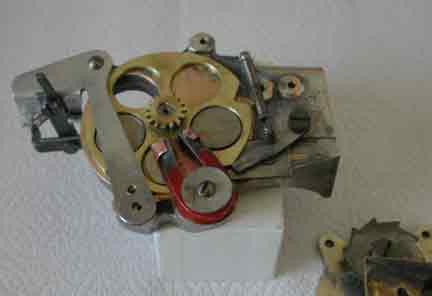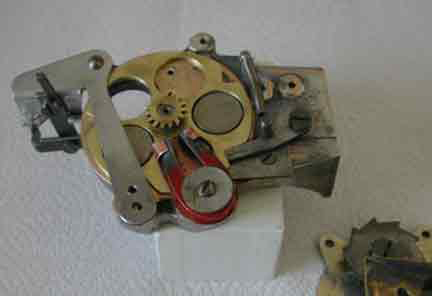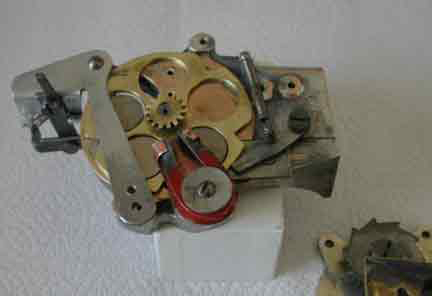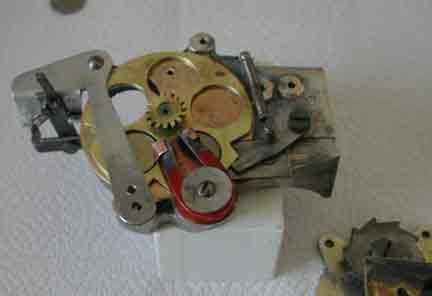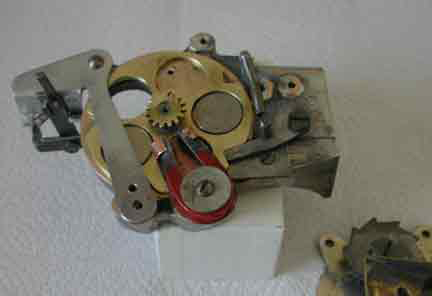Coin Rejector or Sort, Jennings Sportsman
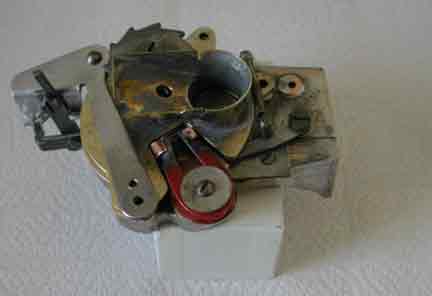
(mouse over the buttons to see the steps or "PLAY" to see the animation)
Objectives
The objectives for a rejector are:
- accept a coin passed on and approved of by the coin slide. The coin can be a token or a nickel.
- check to see if the coin is a token or a real nickel.
- if it is a nickel, it is real money and should be placed in the coin box for later collection.
- if it is a token put it in the coin feed tube, to be paid out should the player win
- prevent the coins from overflowing the feed tube by skimming the coins at the top into the coin box.
By paying out tokens, the management can more easily account for winnings. Real money will walk out in the players' pockets. A player putting in slugs will get paid out in slugs as they are generally magnetic. If the game is located where gambling is prohibited, the management can claim no money is exchanging hands and will only exchange real money for tokens for patrons they recognize.
Part Identification:
The star ratchet is just under the chute. The chute catches the coin as it falls from the coin slide above. It has a gear that engages the small gear that causes the turntable to rotate. The coin slide has a tab that engages the star ratchet as the player depresses the coin slide.
The turntable is circular and has a hole for each coin. It has notches in the rim to prevent rotation in the wrong direction.
The magnet is red and U shaped. There is a flat metal plate located under the magnet and turntable. It can be seen poking out from under the magnet on the right side. In the current position, it covers the hole and coins, magnetic or not, continue around the turntable and are dropped into the coin feed tube. If the plate is located to the right, it uncovers the hole under the magnet that leads to the coin box. Any non-magnetic coins are dropped and are not rotated around to the feed tube.
The pawl is the spring loaded lever that fits into a notch in the turn table. It prevents the turn table from rotating backwards (counter-clockwise) when the coin slide is pulled back out.
The coin skimmer is the lever on the left side of the assembly. It also is pushed by the coin slide as it is operated by the player. It pushes any coins at the very top of the coin feed tube into the coin box, preventing the coins from filling up the tube and jamming the rejector.
See also the coin slide animation and a picture of the coin slide and rejecter together.

